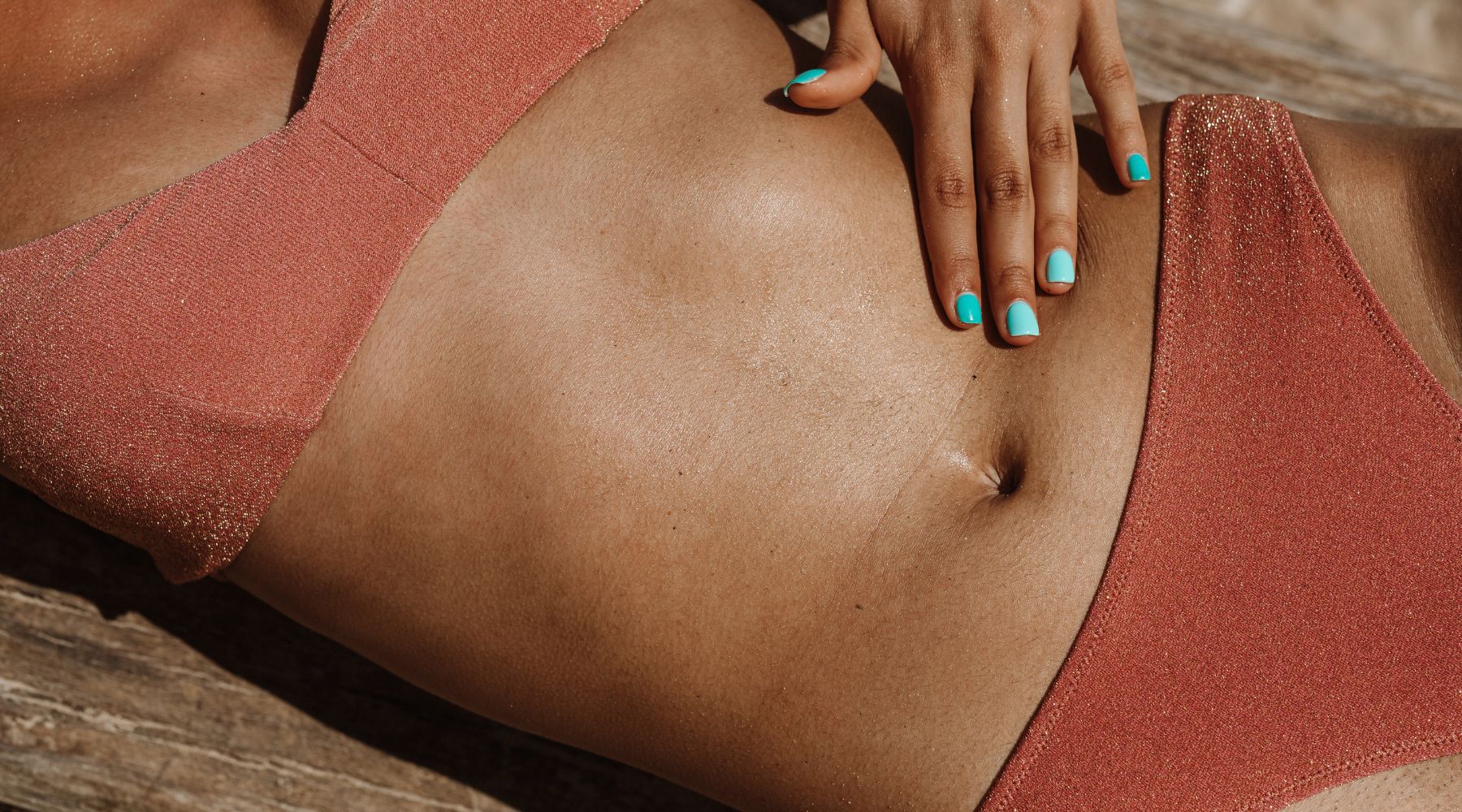If you are considering liposuction, you may be wondering what to expect. After all, liposuction was historically associated with a host of unpleasant side effects and horror stories of people suffering after the surgery. Some of these myths and legends about liposuction are still floating around today.
Liposuction has come a long way since it was first attempted in the 1920s by a surgeon in France. Since that time, the procedure has been further developed, and there have been many improvements, both in the results and the safety of the procedure.
According to the ISAPS (International Society of Aesthetic Plastic Surgery), the number of liposuction procedures advanced to first place over breast augmentation surgery. Liposuction made up almost 15% of the total cosmetic surgeries performed worldwide in 2022.
Many patients ask, “Does liposuction hurt?” or “How long will it take me to recover from liposuction”?
Today, we are going to answer some of the questions we hear from patients about what to expect from today’s liposuction procedures.
Pain Level Depending on How Liposuction Is Done
Liposuction is considered a surgical procedure, and it can range from minimally invasive to moderately invasive depending on how large of an area is being treated and how the lipo is performed.
Today, there are different techniques used for liposuction, including:
- Tumescent Liposuction
- This method of liposuction is the most frequently used. A special solution is injected by your surgeon into the areas to be treated which makes it easier on the surgeon as well as the patient. This solution is a mixture of medications such as epinephrine, which helps blood vessels contract, lidocaine, sodium bicarbonate, which helps reduce pain, and sterile saline.
The procedure can be done under general anesthesia or with just the numbing solution, depending on the area being treated and patient preference. Tumescent liposuction involves creating very small incisions and inserting a very thin hollow instrument called a cannula. The cannula is moved back and forth under the skin to to dislodge the fat cells as they are suctioned out through its opening. After the desired amount of fat is removed, the tiny incisions are closed.
- Laser-Assisted
- Laser lights that are positioned on fiber tubing are used to turn the fat cells into a liquid to make it easier to suction them out with the tiny cannula. It is performed through a small incision, similar to other forms of liposuction.
- UAL or VASER Liposuction
- Ultrasound-assisted liposuction, or VASER, which stands for Vibration Amplification of Sound Energy at Resonance and is a fancy way to say that ultrasound technology is used to loosen the fat cells instead of using the cannula to dislodge and break them up, It is typically done with just a local anesthetic, but general anesthesia can be used if a large area is involved.
The preparation for the VASER procedure is identical to tumescent liposuction, but the technique used during the procedure is different. When using the VASER technique, the cannula is held stationary and the fat cells are vibrated loose before they are vacuumed out. This is much gentler on the tissues surrounding the fat cells and removes them with much less bruising and bleeding, which decreases the recovery time and post-liposuction pain.
How Long Does Liposuction Hurt Afterwards?
Liposuction is one of those surgeries that has many variables. A popular question circulating online right now is “How long does your back hurt after liposuction?” The answer would depend on what technique was used to perform the liposuction, how large of an area was treated, and patient-specific circumstances. Most likely, the individual who asked this question has post-liposuction bruising and swelling, which should significantly dissipate within a few weeks. However, it can take several months before all the swelling is eliminated and the final results of the liposuction procedure are evident.
Most patients who undergo VASER liposuction do not need to use general anesthesia (GA), but some techniques may require it. Many patients have adverse reactions to GA and may experience nausea, vomiting, and fatigue. These can last for a day or more, and the surgeon can prescribe some medication that will help ease these symptoms.
Recovering after liposuction will look different for each patient, but it is nothing remotely similar to recovering from the liposuction of 20 years ago.
What You Can Do To Control Post-Liposuction Discomfort
Depending on the extent of your procedure, you may experience mild to moderate discomfort after having liposuction. Some of the things you can do to help facilitate a comfortable recovery are listed below.
- 1. Wear Your Compression Garments
- Bruising and swelling are very normal after having liposuction, and both can cause a certain degree of discomfort. The surgeon will recommend compression garments for the patient to wear that will help keep these issues to a minimum. It is critical for your recovery and your comfort level that you wear these garments as directed by your doctor.
- 2. Take Arnia Or Eat Pineapple
- Many patients take arnica supplements to help mitigate bruising, and eating fresh pineapple can also provide this benefit.
- 3. Use Acetaminophen To Help Ease Discomfort
- Most patients experience a minimal amount of discomfort that can be adequately controlled with over-the-counter acetaminophen. Some describe their discomfort as feeling like they had an extensive workout and are sore from the gym. This can be accompanied by the normal tenderness associated with bruising.
- 4. Use Cold Compresses
- Using cool compresses on the treatment areas for the first few days can help keep swelling to a minimum and ease discomfort. Make sure you are not putting ice directly on your skin.
- 5. Get Walking
- After liposuction or any surgery, taking routine walks is highly recommended. Walking helps get the blood pumping, brings down the swelling, and promotes faster healing.
- 6. Stay Hydrated
- Be sure to hydrate well after liposuction, as this surgery, like many others, can alter the body’s natural fluid balance. Ensuring your body is well-hydrated by drinking plenty of water will aid in your recovery process.
- 7. Get Enough Rest
- Getting an adequate amount of sleep is one of the most important things you can do to help yourself recover more quickly. Your body works to repair itself and releases cytokines into your system while you are sleeping. These small proteins defend against inflammation, trauma, and infection.
- 8. Eat Extra Healthy
- Your body is remarkable in the fact that it can heal itself, but we need to give it the proper tools to work with. Making sure you are eating a balanced diet that includes plenty of protein and fresh fruits and veggies will give your body what it needs to function properly.
- 9. Avoid Strenuous Activity
- Your surgeon will provide you with detailed instructions for your recovery after liposuction, which will include activity restrictions. To ensure you get the best results from your procedure and avoid complications, you will need to avoid any rigorous workouts or heavy lifting for at least a month.
- 10. Avoid Nonsteroidal Anti-inflammatory Medications
- Do not take pain relievers that are classified as (Advil, Motrin, Ibuprofen, etc.) for at least the first two weeks. These medications promote drainage and bruising and also reduce blood clotting, which hinders the rate at which you recover. Also, check with your surgeon before taking any supplements, as many of these will mimic the results of these medications.
- 11. Avoid Alcohol and Smoking
- You can raise your risk for post-lipolysis complications if you drink alcohol either before or after your procedure. Alcohol’s blood-thinning effects can cause complications like excessive bleeding after surgery, as well as dehydration, swelling, lethargy, and pain.
Smoking slows down the rate at which the body recovers and can put you at risk for complications and an extended recovery.
Where Can I Find Out More About Liposuction?
If you are interested in learning more about liposuction and how you can benefit from the procedure, contact IBI Plastic Surgery & Med Spa.
Dr. Angelina Postoev, a triple board-certified cosmetic surgeon, is expertly skilled in the art of liposuction. She uses her combination of medical expertise and creative artistry to create contours that are both aesthetically pleasing and natural-looking. Working with a qualified surgeon is critical to your safety and to your results. Liposuction requires expertise and precision and should not be trusted by just anyone.
Liposuction can be a life-changing procedure for many individuals and can provide an extra boost of confidence. Set up a consultation to speak with one of our experts today and find out which liposuction procedure can help you accomplish your aesthetic goals.







